Nov 26, 2017 | coins, commentary, news
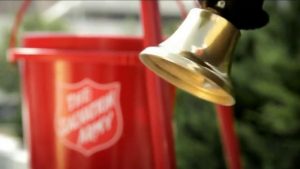 The reason why I search for news about topics related to numismatics from outside the industry allows me to get an understanding of how others see numismatics. I find even the most innocuous story about a country considering redesigning their currency, a find of a coin thousands of years old, and how pocket change finds can lead to high bids on online auctions to be interesting.
The reason why I search for news about topics related to numismatics from outside the industry allows me to get an understanding of how others see numismatics. I find even the most innocuous story about a country considering redesigning their currency, a find of a coin thousands of years old, and how pocket change finds can lead to high bids on online auctions to be interesting.
I share these with you to inspire your collection and help promote the hobby.
But as I shared a few weeks ago, searching the news also comes with its distractions. The latest happens this time every year when the stories about a gold coin being dropped in those ubiquitous red kettles become prominent.
I am not against giving to charity. On the contrary, I think more people should be charitable with whatever they could give. If time is money then give your time. In fact, I am one of those people who believe that when someone reaches 18 years old they should be required to do two-years of public service. It does not have to be in the military but something to serve the public good.
However, dropping a gold coin into a red kettle may look good as news headlines but can really be more problems than they are worth.
As we know, selling a coin is not the easiest thing to do and when you do, you do not receive its full value. A dealer may raise the bid price of a coin from a charity to provide some charitable assistance, but most dealers are not going to buy the coin at full value—unless they are charitable. And this does not take into consideration the fluctuating price of the metals. Maybe, by the time the charity sells the coin, the market price drops and the coin is not worth as much as the day it was dropped into the kettle.
Rare coins may be more problematic. For the best value, those have to go to auction and as anyone who has sold merchandise in an auction, you never know what the hammer price will be. Selling anything at an auction is risky. While a quality rare coin may bring in more than the coin is worth, it can also do far worse.
Since gold is currently $1288 per ounce and considering that modern bullion coins have about a 15-percent numismatic premium, rather than buy a bullion coin and drop it into a kettle, take the $1481 in cash and drop that instead. You can do what an acquaintance does and wrap a few $100 notes around a $1 note so it looks like you are giving a few dollars. When they open the kettle and see hundreds of dollars in cash, they will be happy and will be able to use it for their work immediately without having to worry about selling the coin.
If you want to donate the proceeds from the sale of a coin to charity, that is wonderful. But sell the coin yourself. You are more qualified than these charities in obtaining value from the sale. Then donate the cash. It should not be about the ego boost from being written about in the newspapers. It should be about helping the charity. Which is more important?
And now the news…
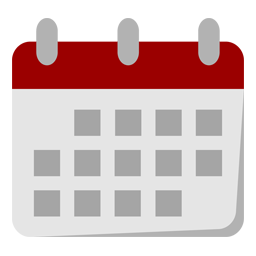
November 19, 2017
JAKARTA – Coin rubbing is a form of folk medication practised in Indonesia and other Southeast Asian and East Asian countries, such as Laos, Thailand, Cambodia, Vietnam, South Korea and southern China.  → Read more at enca.com
→ Read more at enca.com

November 19, 2017
Russian artist Roman Booteen is a modern master in the art of the hobo nickel—a term used to describe the 18th century sculptural art form of hand-engraving coins. His latest extraordinary piece—titled Gold Bug—was inspired by Edgar Allan Poe's short story, The Gold Bug.  → Read more at mymodernmet.com
→ Read more at mymodernmet.com

November 20, 2017
(1) View gallery The Queen and Prince Phillip’s platinum wedding anniversary is being commemorated with a new coin, minted in Banstead. The coin is 130mm in diameter, weighs nearly 2kg and is encrusted with 70 diamonds, and the limited run of 70 coins will be hand-finished by the master craftsman at Pobjoy Mint.  → Read more at epsomguardian.co.uk
→ Read more at epsomguardian.co.uk

November 22, 2017
New coin to be put in circulation from Wednesday November 22  → Read more at gulfnews.com
→ Read more at gulfnews.com

November 23, 2017
One of my favourite things is my Dad’s old horseshoe wallet where he kept his spare change and a rolled pipe cleaner or two. I used it for years after he died, packing it with British bronze 12-sided threepenny bits and shillings until I arrived in Australia and stuffed it with dollar coins and 50¢ dustbin lids.  → Read more at sheppnews.com.au
→ Read more at sheppnews.com.au

November 23, 2017
A treasure hunter has unearthed a haul of ancient gold coins, thought to have been buried with an Anglo-Saxon King nearly 1,500 years ago. Chris Kutler, 54, stumbled upon the coins after spending four days searching a 1,600 sq metre field in Chelmsford, Essex.  → Read more at dailymail.co.uk
→ Read more at dailymail.co.uk

November 24, 2017
After gold coin’s continued rally in the past month, which pushed….  → Read more at financialtribune.com
→ Read more at financialtribune.com

November 24, 2017
The Apiary Fund Commemorative coin is a tribute to the traders who put in time, energy, and faith in their efforts to become funded traders. OREM, Utah November 24, 2017 In the spirit of those Amer…  → Read more at nbherard.com
→ Read more at nbherard.com

November 25, 2017
One hundred years ago there was a shortage of pennies during WWI.  → Read more at qconline.com
→ Read more at qconline.com
Image courtesy of
iSpot.tv, a still frame from a Salvation Army video ad.
Nov 24, 2017 | cents, coins, dollar, fun, halves, nickels, state quarters
 What would it take to put together a modern type set?
What would it take to put together a modern type set?
How would you define a modern type set?
This is the summary of the email conversation I have been having with someone looking for an interesting challenge to work on with his children.
For new readers and those new to numismatics, a type set is one coin of every type regardless of date or mintmark. Although some coins have one-year types, like the 50 State Quarters, there are others where one coin will represent an entire series, like the Roosevelt Dime.
While there are a lot of interesting coins types we focused on modern coins. Modern coins are those struck since 1965 when coins went from silver to copper-nickel except for the Kennedy half-dollar that was made of 40-percent silver through 1970. To budding young numismatists, modern coins are all they know.
In fact, all they know is that the quarter has a constantly changing reverse and they have seen differences in the Lincoln cent and the Jefferson nickel. They did not go through the fiasco of the Susan B. Anthony dollar or marvel at the first circulating commemoratives of the modern era: the dual-dated bicentennial coins. They were not around to search boxes of Cheerios for the new Sacagawea dollar coin or the millennial cent.
-

-
Obverse of the Susan B. Anthony Dollar
-

-
The 2000 Cheerios Dollar
Modern coins do not get the same love as some of the classics. Aside from not containing silver, there have been controversies over designs (see the “spaghetti hair” that George Washington was sporting on the 50 State Quarters) and how the relief on coins has been lowered by the U.S. Mint in an attempt to extend die life.
Some not-so-great designs
-
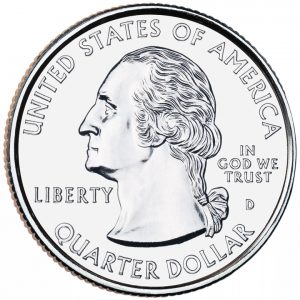
-
Obverse of the 50 State Quarters with Washington’s spaghetti hair
-
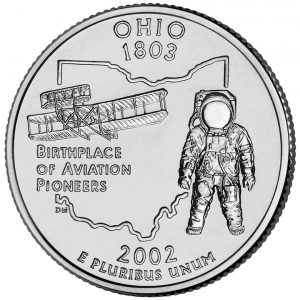
-
2002 Ohio Quarter with the hanging astronaut
-

-
2004 Florida Quarter with a jumble of stuff
Although people love the classic designs two of my favorite designs of the modern era is the Drummer Boy reverse on the Bicentennial quarter and the Thomas Jefferson portrait on the obverse of the 2005 Westward Journey nickels. And even though I have not written much about them, there are some fantastic designs in the America the Beautiful Quarters series. A few that you may want to take a second look at include 2017 Ellis Island, 2017 George Rogers Clark National Historic Park, 2016 Shawnee National Forest, and the 2015 Blue Ridge Parkway quarters just to name a few.
A few of the great America the Beautiful Quaters designs
-
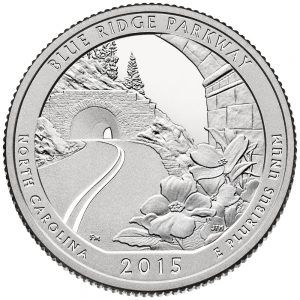
-
2015 Blue Ridge Parkway – North Carolina
-

-
2016 Shawnee National Forest – Illinois
-
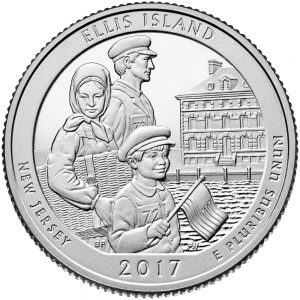
-
2017 Ellis Island – New Jersey
-
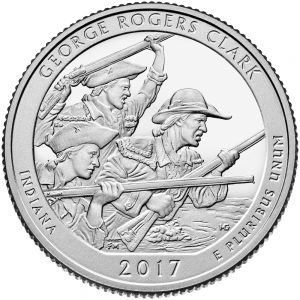
-
2017 George Rogers Clark National Park – Indiana
Sitting with a Red Book, I started to list the coin types that would make up a modern type set. If we limited the set to circulating coins (e.g., not including half-dollars and one-dollar coins) that can be found in pocket change, there would be 128 coins with a face value of $28.97.
| Type |
No. in Series |
Face Value |
Series Value |
| Lincoln Memorial Cents |
2 |
0.01 |
0.02 |
| Lincoln Bicentennial Cents |
4 |
0.01 |
0.04 |
| Lincoln Shield Censt |
1 |
0.01 |
0.01 |
| pre-2004 Jefferson Nickels |
1 |
0.05 |
0.05 |
| Westward Journey Nickels |
4 |
0.05 |
0.20 |
| Return to Monticello Nickels |
1 |
0.05 |
0.05 |
| Roosevelt Dimes |
1 |
0.10 |
0.10 |
| Washington Quarters |
1 |
0.25 |
0.25 |
| Bicentennial Quarters |
1 |
0.25 |
0.25 |
| 50 State Quarters |
50 |
0.25 |
12.50 |
| D.C. and U.S. Territories Quarters |
6 |
0.25 |
1.50 |
| America the Beautiful Quarters |
56 |
0.25 |
14.00 |
| Total |
128 |
1.53 |
28.97 |
The above table does take into consideration the entire 56 Amercia the Beautiful Quarters series including future issues. The kids have to understand the concept of future issues and maintain space for these coins in their album.
Starting the set with pocket change allows the kids to get used to the concept of looking at the coins to understand what they are looking for. To help with their search each child was given a Red Book and two apps on their iPads: PCGS CoinFacts and PCGS Photograde. They can use the Red Book as a handy off-line reference but use PCGS CoinFacts to learn more when they have access. Photograde is very useful to help them assess the condition of the coins.
While collectors have a basic understanding of coin grading, getting it right can be difficult. These kids were given a basic lesson on things to look for when trying to assess the condition of the coins they find. It will be interesting to see how they interpret this information.
Once we covered coins that can readily be found in circulation, we then discussed the other business strikes that are usually not found in ordinary pocket change.
After an interesting discussion, it was decided to make those a separate collection.
As a separate collection, this will give the kids an opportunity to go to dealers and coin shows to allow the kids to learn about buying coins in this environment. They will learn how to talk with a dealer, gain experience negotiating, and do some comparison shopping. It will let them get the experience and see different coins but maintain a collection discipline that will allow them to learn to collect on a budget.
What are the modern type coins that do not see a lot of circulation? Once again, I sat with the Red Book and came up with the following list:
| Type |
No. in Series |
Face Value |
Series Value |
| Kennedy Half Dollars |
1 |
0.50 |
0.50 |
| Bicentennial Kennedy Half Dollar |
1 |
0.50 |
0.50 |
| Eisenhower Dollars |
1 |
1.00 |
1.00 |
| Bicentennial Eisenhower Dollars |
2 |
1.00 |
2.00 |
| Susan B. Anthony Dollars |
1 |
1.00 |
1.00 |
| Sacagawea Dollars |
1 |
1.00 |
1.00 |
| Native American Dollars |
11 |
1.00 |
11.00 |
| Presidential Dollars |
39 |
1.00 |
39.00 |
To complete the task, I came up with a checklist for all of the modern coins in two formats. One is a printed version that they could keep in their pocket as they go about their day. The other is a spreadsheet that can act as an official record. The paper version is a very basic PDF file that can be used to write notes. The spreadsheet offers more information. It also allows them to come up with their own catalogue.
Both files are attached for you to use (see the Creative Commons Attribution-NonCommercial-ShareAlike 4.0 International License for text of the permissions granted with this release).
It will be interesting to see what these kids do!
Checklists
Modern Coinage Type Set Checklist
Modern Coin Type Set Detailed Checklist
Nov 19, 2017 | coins, commentary, nclt, news
Sometimes, I find it difficult to keep an open mind with some of the non-circulating legal tender (NCLT) coins that are on the market.
Some of the themes have started as interesting ideas have turned into blatant commercialism that I am not sure how to interpret its benefits to the hobby.
From superheroes to movie tie-ins to the cartoons, the themes are as varied as the grocery store shelves.
The latest NCLT that has me wondering about the future of the hobby is the 2018 Fiji Coca-Cola Bottle Cap-Shaped Dollar.
Yes, a Coca-Cola bottle cap-shaped coin with a face value of one Fijian dollar. The reverse of the coin is colored the famous Coca-Cola red with the script logo that is familiar to anyone who has passed by a Coca-Cola product. The obverse has the Fijian coat of arms, the date, and the specifications of the coin: 6 grams of .999 fine silver.
-

-
2018 Fiji Coca-Cola Bottle Cap-shaped coin (rendering)
-

-
Packaging for the 2018 Fiji Coca-Cola Bottle Cap-shaped coin (rendering)
After looking at the specifications, the coin is 32.6 mm (1.283 inches) in diameter and I thought that the coins were going to be very thin.
Comparing the specification of this coin to pre-1965 United States coins that were made of .900 silver, the Washington quarter was made of 6.25 grams of silver and copper but was 24.3 mm (.957 inches) in diameter. The quarter is .25 grams heavier but 8.3 mm smaller. My caliper measured a 1960 uncirculated Washington quarter with a thickness of 1.75 mm.
Something closer is the size of the Kennedy half-dollar with a diameter of 30.6 mm (1.204) or 2 mm smaller than the Coco-Cola bottle cap coin. But the Kennedy half-dollar weighs 12.5 grams, more than double the Fijian coin.
To satisfy my curiosity, the caliper said that the uncirculated 1964 Kennedy half-dollar in my collection was 2.15 mm thick.
Not counting for the flare of the edges to resemble a bottle cap, the coin is probably 1 mm thick, less than the 1.35 mm of a 1955 Roosevelt dime I measured.
The coin is available for pre-order only from one company on eBay for $29.95 with free shipping. Expected shipping is on December 8, 2017.
The last time I checked, the listing reported that 1,481 of these coins were sold.
For the record, 6 grams of silver weighs .1929 troy ounces. With the price of silver currently at $17.31 per troy ounce, the coin contains $3.34 worth of silver.
If someone buys one of these coins, feel free to write a review. I will publish it here on the blog!
And now the news…

November 13, 2017
BRENTWOOD — When milestones are reached in the armed forces, servicemen and women often receive a challenge coin, creating solidarity with others who share the same accomplishment.  → Read more at fosters.com
→ Read more at fosters.com

November 14, 2017
A hoard of 21 Islamic gold dinars, 2,200 silver coins, and gold artifacts dating to the 12th century CE has been unearthed by archaeologists digging at the Abbey of Cluny, a former Benedictine monastery in Cluny, Saône-et-Loire, France.  → Read more at sci-news.com
→ Read more at sci-news.com

November 14, 2017
IF you've got one of these most sought-after 50p coins then you could be sitting on a tidy profit. The Sir Isaac Newton 50p coin was introduced into circulation in September and Brits are slowly starting to find it in their spare change.  → Read more at thesun.co.uk
→ Read more at thesun.co.uk

November 15, 2017
An "exceptional and rare" medieval treasure trove including more than 2,200 gold and silver coins has been found in France in what has been called a "remarkable" discovery by archaeologists. It's the kind of discovery archaeologists dream of.  → Read more at thelocal.fr
→ Read more at thelocal.fr

November 15, 2017
It was just a strange old penny, a copper-nickel Indian Head minted in 1859, when the government was trying out different metals for one-cent pieces. A grandfather gave it to Eric Pfeiffer Newman in 1918, when he was 7, a little bonus for his nickel-a-week allowance.  → Read more at nytimes.com
→ Read more at nytimes.com

November 16, 2017
A metal detectorist has tracked down a rare gold coin from Richard III's reign near to the site of the Battle of Bosworth. The Half Angel is one of just a handful of such coins that have survived from the king's two-year reign.  → Read more at leicestermercury.co.uk
→ Read more at leicestermercury.co.uk

November 17, 2017
Archaeologists with the National Center for Scientific Research and other institutions in France revealed today that they have unearthed 2,200 silver deniers and oboles, 21 Islamic gold dinars, a very expensive gold signet ring and other objects made of gold from the Abbey of Cluny, located in the department of Saône-et-Loire.  → Read more at mining.com
→ Read more at mining.com
Images courtesy of Modern Coin Mart on
eBay.
Nov 12, 2017 | coins, commentary, news, technology
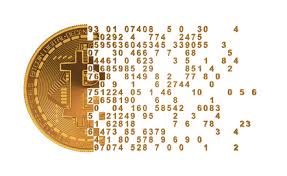 As I peruse the Interwebs for numismatic-related stories from non-numismatic sources, my searches are inundated with stories about Bitcoin, crypto-currencies, and blockchains. Most of the time, the stories are just noise given my objective to find information relevant to collectors including the issuance of circulating currencies and the impact of precious metals on the market.
As I peruse the Interwebs for numismatic-related stories from non-numismatic sources, my searches are inundated with stories about Bitcoin, crypto-currencies, and blockchains. Most of the time, the stories are just noise given my objective to find information relevant to collectors including the issuance of circulating currencies and the impact of precious metals on the market.
While there is some use of the technologies as an indicator of a store of something resembling wealth or as a new method of providing electronic transactions, the concept of inventing a currency out of thin air—or electronic bits—is something that may be more dangerous than the stock market.
Bitcoin, which is a type of crypto-currency, is traded using a blockchain, a technology that provides a mechanism for secured transactions between parties. Like the Federal Reserve Note, it is an invented currency whose value is in the eye of the beholder. The only difference between the Federal Reserve Note and crypto-currency is that the worth of the paper currency is backed by the full faith and credit of the United States government. Bitcoin has no backing, very little regulation, and could become as worthless as Enron stock as fast as it became worthless.
Although you may have issues with the way the federal government and the politicians have been conducting themselves, the government provides the backing to make sure that the currency you use has some representative value by law. It is called fiat money.
Crypto-currency not only has no intrinsic value, but it is not backed or supported by the government. It has no regulation and is worth what someone will provide in trade. The assignment of value to crypto-currency may be market driven but those who have seen the silver market of 1980, unregulated markets can cause significant problems.
The blockchains that protect the transactions are software creations. Software is what is used to provide the logic to the computer to do its job—or not do its job in the cases of Equifax, Target, Home Depot, the Office of Personnel Management, and any of the other servers you have heard attacked in the last few years.
Of course the most important thing to numismatists, crypto-currency has no presence in the physical world. You cannot create a collection of bitcoin since it really does not exist. And maybe that should be the question: if it does not have a physical form or a physical representation, is it really money?
And now the news…

November 6, 2017
The Stellarton Legion is now the proud recipient of a Nova Scotia Highlanders ceremonial unit coin. And Stellarton Legion president Jack Chaisson was on hand to take personal delivery of the coin from Lieutenant-Colonel Colin Todd at Pictou Legion, after attending the county Remembrance Day ceremony in town Sunday.  → Read more at ngnews.ca
→ Read more at ngnews.ca

November 6, 2017
The Royal Mint has released its official Remembrance Day coin ahead of commemorations on Saturday. Stephen Taylor, a graphic designer at the Royal Mint, said his artwork was inspired by the world-famous war poem 'In Flanders Fields' by John McCrae.  → Read more at standard.co.uk
→ Read more at standard.co.uk

November 6, 2017
The Perth Mint has released a world-first silver coin in the shape of a figure eight. Likely to be a hit with Chinese coin collectors and buyers, only 8888 of the 2oz, 99.99 per cent silver coins will be released at a recommended retail price of $218.  → Read more at thewest.com.au
→ Read more at thewest.com.au

November 7, 2017
Bruderer UK, which has nearly 50 years’ experience creating world renown precision high speed presses, has installed a state-of-the-art machine into the Royal Mint’s Llantrisant facility, giving the world famous institution additional speed, capacity and flexibility.  → Read more at expressandstar.com
→ Read more at expressandstar.com

November 8, 2017
Gold isn’t so shiny anymore. Globally, demand for the precious metal has fallen to its lowest level since late 2009, according to the World Gold Council. In the third quarter of 2017, demand for the haven asset was 915 metric tons, 9% lower than a year earlier.  → Read more at qz.com
→ Read more at qz.com

November 9, 2017
In January, 1999 Cassinelli Construction Co. was employed by Nevada State Public Works Department to remove a portion of Carolyn Street at the Nevada State Museum to construct a parking lot and build a small park facing Carson Street.  → Read more at elkodaily.com
→ Read more at elkodaily.com

November 9, 2017
Gold was once a common form of payment around the developed world, but after World War II the precious metal's influence began to wane. In 1971, when the United States finally put an end to the gold standard, the role of the yellow metal changed for good.  → Read more at fool.com
→ Read more at fool.com

November 10, 2017
The Thank-A-Vet cenotaph memorial coin set, created for local veterans and their families as a keepsake, has been completed with the minting of the final two coins and creation of a pine display box. – Sean Allen/Metroland  → Read more at brantnews.com
→ Read more at brantnews.com

November 11, 2017
The thing about money — we all need it. “Money bewitches people. They fret for it, and they sweat for it.  → Read more at royalgazette.com
→ Read more at royalgazette.com
Nov 12, 2017 | Baltimore, coins, commentary, shows
 Whitman Expo came to Baltimore this weekend to fill up three large halls in the Baltimore Convention Center. Like every Whitman Expo, dealers come from all over making it a must-attend east coast destination.
Whitman Expo came to Baltimore this weekend to fill up three large halls in the Baltimore Convention Center. Like every Whitman Expo, dealers come from all over making it a must-attend east coast destination.
I was able to attend on Friday afternoon. It was not for long because I had to work half of the day. But it is always worth the trip.
Travelling to Baltimore on Friday is different than going on Saturday. First, the traffic between the Washington metro area and Baltimore is heavier. The traffic in Baltimore is also heavier especially on I-95 going through the city. And parking is a little more expensive because you compete with the business parking of downtown Baltimore. Someday, I will take the light rail that stops between the Convention Center and Camden Yards.
During a short visit to a show like Baltimore you either have to have a concise strategy or whatever objectives there are will not be fulfilled. This time I had no objectives and spent a lot of time talking with people.
Over the years I have met a lot of dealers and others while walking around I wanted to visit with some of these people. I also got to meet with one of the long-time readers of the blog. Bob is a frequent correspondent who came down from New Jersey on Amtrak to also visit the show. It was good to meet Bob and put a face on the real person behind the emails.
During the short time I spent on the bourse floor I learned a few things about the market:
- Sales are moderate but steady. Dealers are selling more online than in shows but see the shows as a valuable marketing tool. None of the dealers I spoke with are seeing the end of coin shows but can envision a reduction in the number of shows.
- Some dealers are diversifying their inventory from their core interests to other areas. One dealer noted that he was seeing more junk box searching than in the past. Although he thought that his sales were below average, he thought that the low-end sales would pick up on Saturday when younger people will attend.
- I thought there was a lot more silver than gold. One dealer that sells modern bullion coin such as American Eagles, Canadian Maple Leafs, and Chinese Pandas said that silver bullion was selling better than their gold counterparts. With silver trading under $17 per troy ounce, those interested in bullion are buying silver. He also attributed the interest in silver with some of the better silver issues like the Pandas and other non-circulating legal tender (NCLT) coins.
- Speaking of NCLT coins, I did not see a big selection. A dealer whose case included a few older issues said that the current NCLT issues may be too expensive for the market. It is one thing to issue themed coins that may be of interest but selling them has been a problem. Some people find it difficult to justify the selling of a one-ounce silver coin for more than four-times bullion value. This dealer thought that the licensing fees being paid for these images were probably driving up the price and driving their potential market away.
Another interesting aspect of the show is the number of non-numismatic items for sale. There were two dealers whose cases contained only jewelry. Most of the jewelry were quality items and estate pieces but I was surprised there were two dealers whose inventory was exclusively jewelry. A few dealers I have seen in the past also had cases of jewelry. One said that the rings he was selling were an accumulation of many years and found that the market was more receptive to the jewelry.
In addition to the jewelry, a dealer was selling used music compact discs (CD) and another had African artifacts including a beautiful silver necklace. Some of the currency dealers also had historical papers, letters, ledgers, and other ephemera that only has a tangential tie to numismatics.
Last week I asked how dealers would respond to the market. It looks like some dealers have turned to inventory diversity and including non-numismatic collectibles. If it helps bring in more collectors, it might be a good move.
Nov 6, 2017 | coins, news, shows

What are the future of large coin shows like Whitman Expo?
Sometimes, I wonder if the numismatic industry does the same thing.
Next weekend will be the Whitman Baltimore Expo at the Baltimore Convention Center. I am curious as to what I will find.
Since Whitman took over the show, they have improved the experience and what I have been told, they improved the experience for the dealers. They have made it a destination for many east coast dealers and collectors.
But it looks like the show has plateaued.
This is not Whitman’s fault. Whitman provides the venue. What are the dealers doing to meet the new demands of the market? What are the new trends? Based on my last few visits to Baltimore, you would never know that the hobby is changing. New collectors are not collecting the same coins as their parents and grandparents. New collectors are not buying in the same way as their parents and grandparents. Yet, when I go to Baltimore I will find an environment that may have been more comfortable 10 years ago than it is today.
I am not sure what needs to be changed. I will think about it when I am walking the bourse floor next weekend. But for now, the industry needs think about how to evolve. Otherwise, we could be looking for the downfall of these shows and that would be a shame.
And now the news…

November 2, 2017
Australia’s new Remembrance Day $2 coin is racist and a national disgrace, Aboriginal activist Michael Mansell says. The coin, featuring rosemary leaves and purple flowers, is to honour Australians killed and wounded in military conflicts.  → Read more at theadvocate.com.au
→ Read more at theadvocate.com.au

November 2, 2017
Rare coins, mostly Roman, are believed to have been collected by the Kent castle’s owner, Edward Hussey, and his son  → Read more at theguardian.com
→ Read more at theguardian.com

November 3, 2017
“There’s just a wide variety of things,” Rust said. “Money was issued by Mormons before they made it to Salt Lake, and then things that were issued once they were in Salt Lake.”  → Read more at sltrib.com
→ Read more at sltrib.com

November 3, 2017
Founding father saved first issue $5 with untold historical value  → Read more at tetonvalleynews.net
→ Read more at tetonvalleynews.net
Nov 1, 2017 | coins, commemorative, legislative, US Mint
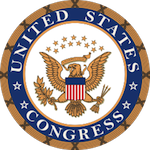 It seems that when I write these posts about the monthly numismatic-related legislation reviews, I note how frustrating it is to follow the workings of Congress. Even though I work as a part-time political analyst and have some contacts I can leverage, even the insiders cannot explain why things happen.
It seems that when I write these posts about the monthly numismatic-related legislation reviews, I note how frustrating it is to follow the workings of Congress. Even though I work as a part-time political analyst and have some contacts I can leverage, even the insiders cannot explain why things happen.
Let’s look at recent legislation. Even though the House passed both the The American Legion 100th Anniversary Commemorative Coin Act (H.R. 2519) and the Naismith Memorial Basketball Hall of Fame Commemorative Coin Act (H.R. 1235) on the same day and sent both the Senate at the same time, the Senate only passed one of the bills while the other is languishing in committee.
Commemorative coin bills are not a big priority for Congress. Most of the time, they are treated as favors for one member or another, along the lines of “you help me with mine and I will help you with yours.” These are not big issues but are used to win points with constituents back home.
Although nobody is sure of the reasons why the Naismith Memorial Basketball Hall of Fame Commemorative Coin Act is being stalled in committee, it may be because of politics and personality conflicts. Usually, when one of these bills are introduced, a version will be submitted to the House and Senate hoping one will pass. The Senate version, S. 1503 was introduced by Sen. Elizabeth Warren (D-MA). Sen. Warren is not a favorite amongst her colleagues on the other side of the aisle. My sources speculate that the Senate’s leadership could be using this as a future bargaining chip against some of her principled stances.
It does not matter what you think about Sen. Warren or her politics. This is the way Congress works. If you think that the Basketball Hall of Fame should have a commemorative coin to celebrate its 60th anniversary in 2020, then let your senators know that you support H.R. 1235 that has already passed the House.
H.R. 965: Saint-Gaudens National Historical Park Redesignation Act
Summary: This bill redesignates the Saint-Gaudens National Historic Site, in New Hampshire, as the “Saint-Gaudens National Historical Park.”
Referred to the Subcommittee on Federal Lands. — Feb 23, 2017
Ordered to be Reported (Amended) by Unanimous Consent. — Jul 26, 2017
Placed on the Union Calendar, Calendar No. 197. — Aug 25, 2017
Motion to reconsider laid on the table Agreed to without objection. — Oct 2, 2017
Received in the Senate and Read twice and referred to the Committee on Energy and Natural Resources. — Oct 3, 2017
H.R. 2519: The American Legion 100th Anniversary Commemorative Coin Act
Summary: This bill requires the Department of the Treasury to mint and issue commemorative coins in recognition and celebration of the 100th anniversary of the American Legion.Surcharges received from the sale of these coins shall be paid to the American Legion for costs related to promoting the importance of: (1) caring for those who have served, and those who are still serving, in the Armed Forces; and (2) maintaining patriotic values, strong families, and assistance for at-risk children.
Referred to the House Committee on Financial Services. — May 18, 2017
Motion to reconsider laid on the table Agreed to without objection. — Sep 25, 2017
Received in the Senate. — Sep 26, 2017
Message on Senate action sent to the House. — Sep 29, 2017
Presented to President. — Sep 29, 2017
Became Public Law No: 115-65. — Oct 6, 2017
H.R. 4044: 75th Anniversary of the End of World War II Commemorative Coin Act
Referred to the House Committee on Financial Services. — Oct 12, 2017
PN1082: David J. Ryder — Department of the Treasury
Date Received from President: October 5, 2017
Summary: David J. Ryder, of New Jersey, to be Director of the Mint for a term of five years, vice Edmund C. Moy, resigned.
Received in the Senate and referred to the Committee on Banking, Housing, and Urban Affairs. — Oct 5, 2017
Committee on Banking, Housing, and Urban Affairs. Hearings held. — Oct 24, 2017
Oct 31, 2017 | Canada, coins, nclt, silver
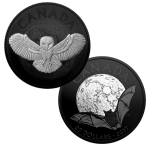 The Royal Canadian Mint has created two unique coins they call “Nocturnal by Nature” that would fit the theme of Halloween.
The Royal Canadian Mint has created two unique coins they call “Nocturnal by Nature” that would fit the theme of Halloween.
What makes them interesting is that the fields and some of the devices are plated with black rhodium to create a darkened look.
The first coin’s reverse, which is sold out, features a barn owl (Tyto alba) descending upon its prey. The view is looking up as the owl descends toward the night sky.
The second coin’s reverse has an image of a brown bat, darkened by night with its silhouette as it crosses passed the moon overhead.
-

-
2017 Royal Canadian Mint Silver Nocturnal by Nature: The Barn Owl
-

-
Obverse of the 2017 Nocturnal by Nature coins by the Royal Canadian Mint
-
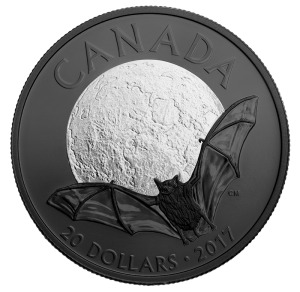
-
2017 Royal Canadian Mint Silver Nocturnal by Nature: The Little Brown Bat
As with all Canadian coins, the obverse features the official Royal Canadian Mint portrait of HM Queen Elizabeth II. The fields and legends are also plated with black rhodium that will make the Queen’s portrait really stand out.
Each coin is one troy ounce of .9999 silver, has serrated (reeded) edges, is 38 mm in diameter, and weighs 31.39 grams. Both coins have a face value of 20 dollars. The Royal Canadian Mint classifies the finish as matte proof.
Mintage is limited to 7,000 for each coin.
The single barn owl coin appears to be sold out on the Royal Canadian Mint website but looks like it can be purchased as part of their subscription program.
The price is listed at $119.95 CAD ($93.55 USD as I type this) for each coin with free shipping to Canada and the United States.
It may be too late for Halloween but they look very interesting!
All images courtesy of the Royal Canadian Mint.
Oct 30, 2017 | coin design, coins, Eagles, platinum, US Mint
Over a week ago, the U.S. Mint announced that they will begin a three-year series of the American Platinum Eagles proof coins featuring designs inspired by the Declaration of Independence. After looking at the designs and the designs of past platinum proof coins, they may be one of the most under-appreciated series of coins produced by the U.S. Mint.
-
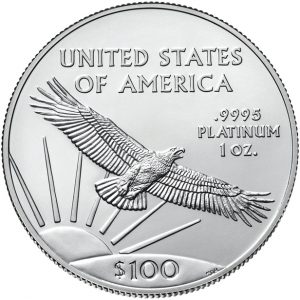
-
American Platinum Eagle bullion reverse design
-

-
1999 American Platinum Eagle Proof reverse – Vistas of Liberty Reverse Designs – Eagle Above Southeastern Wetlands
-
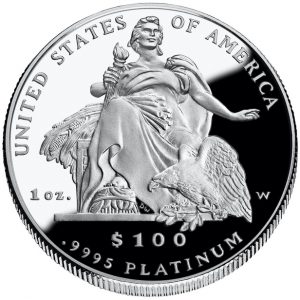
-
2004 American Platinum Eagle proof reverse – Daniel Chester French’s “America” that sits before the U.S. Customs House in New York City.
Since its introduction in 1997, the U.S. Mint has produced four series of proof coins with the reverse honoring different aspects of the nation. To see the list, see the “U.S. Coins by Type” page.
What distinguishes these coins are the well-executed reverse designs that few get to see or pay attention. It may be difficult for the average collector to consider collecting these coins because of the price of platinum has been either on par or higher than the price of gold. Also, platinum is not as well regarded as gold or silver as a precious metal causing it to be overlooked.
-
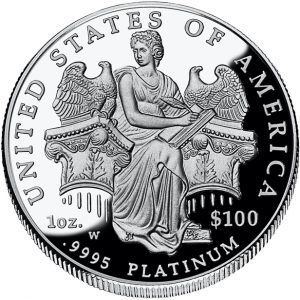
-
2006 American Platinum Eagle proof reverse – Branches of Government Series – “Legislative Muse” representing Legislative Branch
-
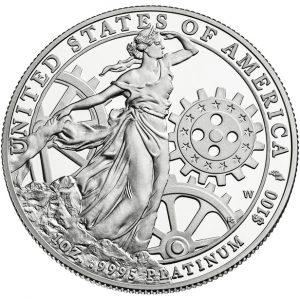
-
2013 American Platinum Eagle proof reverse – Preamble Series – “To Promote the General Welfare”
-
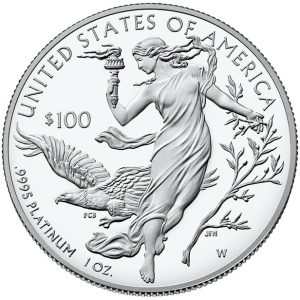
-
2016 American Platinum Eagle proof reverse – Nations Core Values – “Liberty and Freedom”
Since many of these coins did not sell in large quantities, many could be classified as modern rarities. But do not let the lack of supply dissuade you. Prices could be in the range of their bullion value plus a modest numismatic premium because the demand is also lower.
It is too bad these designs are confined to platinum coins. Unfortunately, the authorizing laws allow the U.S. Mint to do this with the platinum coins but not with silver. Since silver is more affordable for the average collector, maybe it is worth trying to ask Congress to change the law to allow these types of series for the American Silver Eagle proof coins.
Coin images courtesy of the U.S. Mint.
Oct 29, 2017 | coins, news, personal
Twelve years ago, when I went looking for numismatic information online, there were a few resources. The major numismatic publications had not fully embraced the online world and writing about numismatics strictly from the collector’s point of view was non-existent. I took a chance and started writing my own blog.
On October 29, 2005, I posted my first article on the Coin Collectors Blog. Back then it was hosted on Google’s Blogger service. While that was a good start, I found Blogger a bit limiting and moved to have it hosted by another company and changed the look-and-feel.
During that time I have also updated my collecting habits. In addition to the coins of the 20th century, I added Maryland colonial currency, the currency of the State of Israel, Canadian coins, and numismatic items associated with my hometown of New York City and specifically, Brooklyn.
-

-
1770 Maryland Colonial 6-dollar note
-

-
1774 Maryland colonial 2-dollar note
-
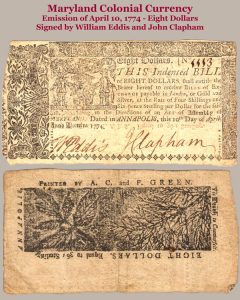
-
1774 Maryland Colonial 8-dollar note
-

-
1901 Dominion of Canada Large Cent reverse
-
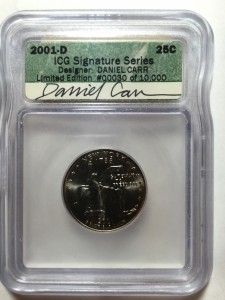
-
2000-D New York quarter with Daniel Carr’s autograph on ICG label
-
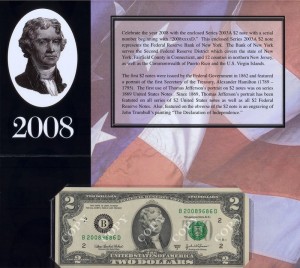
-
2008 $2 Single Note from the New York Fed
-
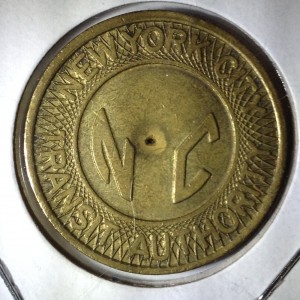
-
New York City Type 2 Subway Token error. It’s missing the punched out “Y”
-

-
1983 Brooklyn Bridge Centennial Medal issued by Brooklyn Union Gas
-
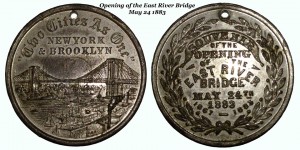
-
Medal from the opening of the Brooklyn Bridge in 1883
-

-
50th Anniversary medal from the Inwood Country Club.
-
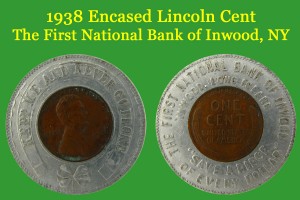
-
1938 Encased Cent from the First National Bank of Inwood (NY)
-
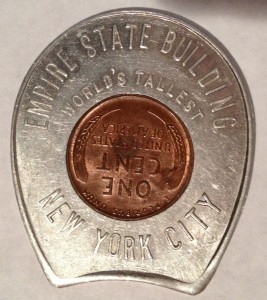
-
1949 Empire State Building Encased Cent announcing it as the “World’s Tallest Building,” which it was in 1949.
I have also picked up some other items that I just think are neat.
-

-
1973 Israel 4th Series Banknote — 50 NIS featuring portrait of Chaim Weismann
-
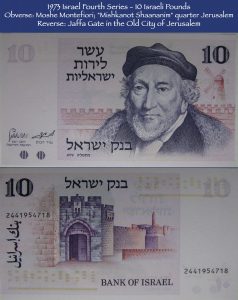
-
1973 Israel 4th Series Banknote — 10 NIS featuring portrait of Moshe Montifiori
-
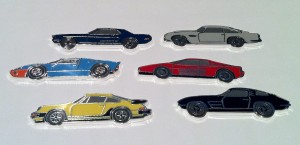
-
2010 Somalia Sports Cars
-
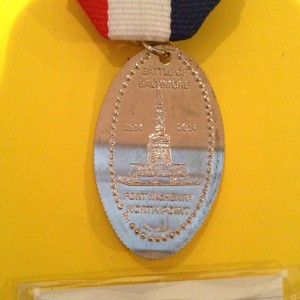
-
Closeup of the elongated quarter that is part of the Maryland Token and Medal Society souvenir card.
-
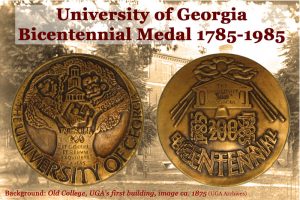
-
University of Georgia Bicentennial Medal — HOW BOUT THEM DAWGS!
-
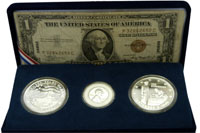
-
Pearl Harbor 65th Anniversary Set from the Honolulu Mint
-

-
2007 Somalia Motorcycle Coins
-

-
Bureau of Engraving and Printing 100 Years
-
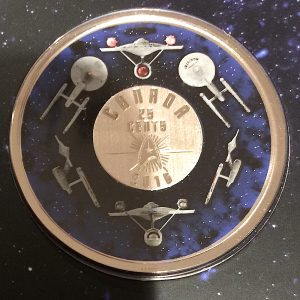
-
2016 Canada Star Trek 25-cents Coin
-
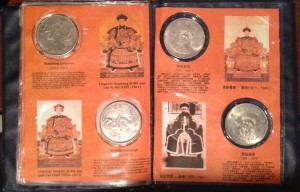
And I have written a lot.
Over 1,540 articles later, I have written on everything from the one-cent coin to the 1933 Saint-Gaudens Double Eagles. I have written about the making of coins and currency to the government’s legal and policy roles in the process. I have called out the American Numismatic Association for its failures but have complimented them when deserved.
What I have found really special is you, my readers.
When I started I did not know how many people would be interested in reading the blog. Today, I can report that my logs show that there an average of 1,100 unique visitors to this blog every time something is posted—which does not include the number of times people or bots try to hack the blog!
Not every reader is from the United States. After the United States, the top five countries the logs show (in order) are Germany, Canada, United Kingdom, India, and Spain.
After the home page, the top read post is “How easy is it to pass counterfeit currency.” This seems to be a search engine favorite when people are looking to do nefarious deeds. But after that post, my information pages U.S. Coins by Type and Numismatic Dictionary (respectively) are the second and third most read pages. GREAT! I am glad it is a used resource!
I am humbled and honored that you take time out of your day to read what I write. I hope you enjoy reading the Coin Collectors Blog as much as I enjoy writing.
Thank you for being part of my 12-year journey. Now onto my next 12 years!
And now the news….

October 21, 2017
Sunlight barely reaches the depths of the cavernous, 5,000 sq ft warehouse space in Chai Wan where Dr Werner Burger and his Taiwanese-born wife, Tsai Yui-mei, who goes by the name Lucy, house seven tons of coins.  → Read more at scmp.com
→ Read more at scmp.com

October 22, 2017
You’d be hard pressed to find anyone in our country who hasn’t been affected by breast cancer—more than 100 women die from this disease every single day. The unbearable toll is too much; it’s time to end breast cancer once and for all.  → Read more at marieclaire.com
→ Read more at marieclaire.com

October 23, 2017
MOORESTOWN — Ted Brigante’s interest in coins began early. An owner of E&B Co. on West Main Street, Brigante grew up listening to his father weave tales of his own fascination with the pennies, dimes and dollars that might one day be worth more than their face value.  → Read more at burlingtoncountytimes.com
→ Read more at burlingtoncountytimes.com

October 23, 2017
Metal detectorists Reg Mead and Richard Miles unearthed the ancient trove, which contained around 74,000 coins, as well as gold and silver jewellery, in June 2012 in a field in Grouville, ending a 30-year search for the treasure.  → Read more at jerseyeveningpost.com
→ Read more at jerseyeveningpost.com

October 24, 2017
A coin dating back to the construction of a historic North-east castle has been discovered. The 16th-century find was unearthed at Castle Fraser, near Inverurie, by a nine-year-old taking part in an archaeological dig, run by the National Trust for Scotland (NTS).  → Read more at eveningexpress.co.uk
→ Read more at eveningexpress.co.uk

October 24, 2017
On October 23, in honor of Breast Cancer Awareness Month, Congressmember Carolyn B. Maloney (NY-12) joined Breast Cancer Research Foundation (BCRF) President and CEO Myra Biblowit, BCRF Chief Mission Officer Dr.  → Read more at qgazette.com
→ Read more at qgazette.com

October 25, 2017
An American “doughboy” with a distinctive crooked nose will adorn a World War I Centennial Silver Dollar being released by the U.S. Mint to mark the hundredth anniversary of the war’s end. The design on the heads side of the coin, which goes on sale next year, is titled “Soldier’s Charge,” and depicts a stone-faced soldier gripping a rifle.  → Read more at stripes.com
→ Read more at stripes.com

October 25, 2017
PHOTOS BY ADRIENNE SARVIS / THE SUMTER ITEM A large coil of copper, called a mondua, and a u-shaped piece of copper, called a manilla, were on display during the annual Sumter Coin Show on Saturday. The pieces were used as currency by Africans and Europeans during the time of the Atlantic slave trade.  → Read more at theitem.com
→ Read more at theitem.com

October 25, 2017
In a rather remarkable discovery, Chinese archaeologists excavated nearly 300,000 pieces of ancient coins that weighed 5.6 tons. The ancient currency was found under a common residential home in Fuliang County located in the province of Jiangxi, China.  → Read more at nextshark.com
→ Read more at nextshark.com

October 26, 2017
British coin expert Roger F. Bland—stopping through the United States to accept a prestigious award for his study of coins—visited campus Thursday evening to detail the history of ancient coin-finding to a group of roughly 40 University affiliates at the Harvard Art Museums.  → Read more at thecrimson.com
→ Read more at thecrimson.com
All coin images courtesy of the U.S. Mint.
 The reason why I search for news about topics related to numismatics from outside the industry allows me to get an understanding of how others see numismatics. I find even the most innocuous story about a country considering redesigning their currency, a find of a coin thousands of years old, and how pocket change finds can lead to high bids on online auctions to be interesting.
The reason why I search for news about topics related to numismatics from outside the industry allows me to get an understanding of how others see numismatics. I find even the most innocuous story about a country considering redesigning their currency, a find of a coin thousands of years old, and how pocket change finds can lead to high bids on online auctions to be interesting. → Read more at enca.com
→ Read more at enca.com → Read more at mymodernmet.com
→ Read more at mymodernmet.com → Read more at epsomguardian.co.uk
→ Read more at epsomguardian.co.uk → Read more at gulfnews.com
→ Read more at gulfnews.com → Read more at sheppnews.com.au
→ Read more at sheppnews.com.au → Read more at dailymail.co.uk
→ Read more at dailymail.co.uk → Read more at financialtribune.com
→ Read more at financialtribune.com → Read more at nbherard.com
→ Read more at nbherard.com → Read more at qconline.com
→ Read more at qconline.com











 As I peruse the Interwebs for numismatic-related stories from non-numismatic sources, my searches are inundated with stories about Bitcoin, crypto-currencies, and blockchains. Most of the time, the stories are just noise given my objective to find information relevant to collectors including the issuance of circulating currencies and the impact of precious metals on the market.
As I peruse the Interwebs for numismatic-related stories from non-numismatic sources, my searches are inundated with stories about Bitcoin, crypto-currencies, and blockchains. Most of the time, the stories are just noise given my objective to find information relevant to collectors including the issuance of circulating currencies and the impact of precious metals on the market. Whitman Expo came to Baltimore this weekend to fill up three large halls in the Baltimore Convention Center. Like every Whitman Expo, dealers come from all over making it a must-attend east coast destination.
Whitman Expo came to Baltimore this weekend to fill up three large halls in the Baltimore Convention Center. Like every Whitman Expo, dealers come from all over making it a must-attend east coast destination.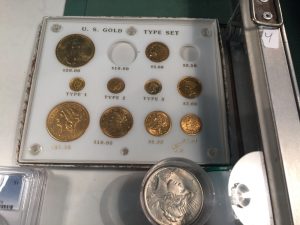
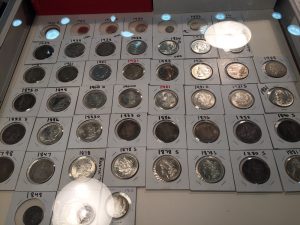
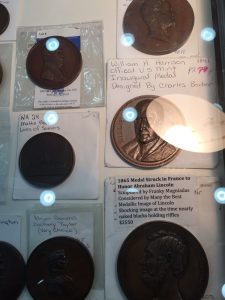


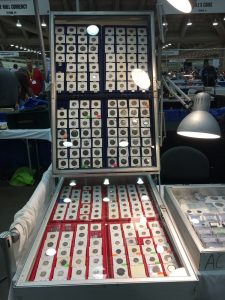
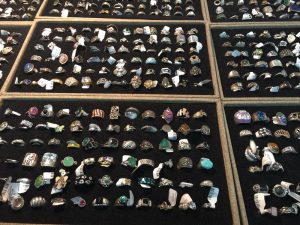
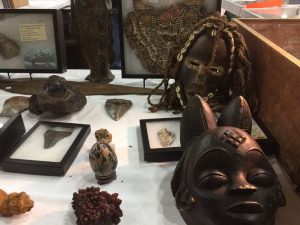
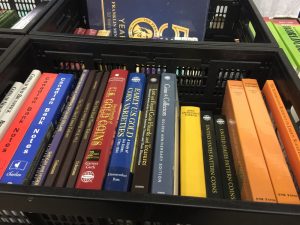

 It seems that when I write these posts about the monthly numismatic-related legislation reviews, I note how frustrating it is to follow the workings of Congress. Even though I work as a part-time political analyst and have some contacts I can leverage, even the insiders cannot explain why things happen.
It seems that when I write these posts about the monthly numismatic-related legislation reviews, I note how frustrating it is to follow the workings of Congress. Even though I work as a part-time political analyst and have some contacts I can leverage, even the insiders cannot explain why things happen.































